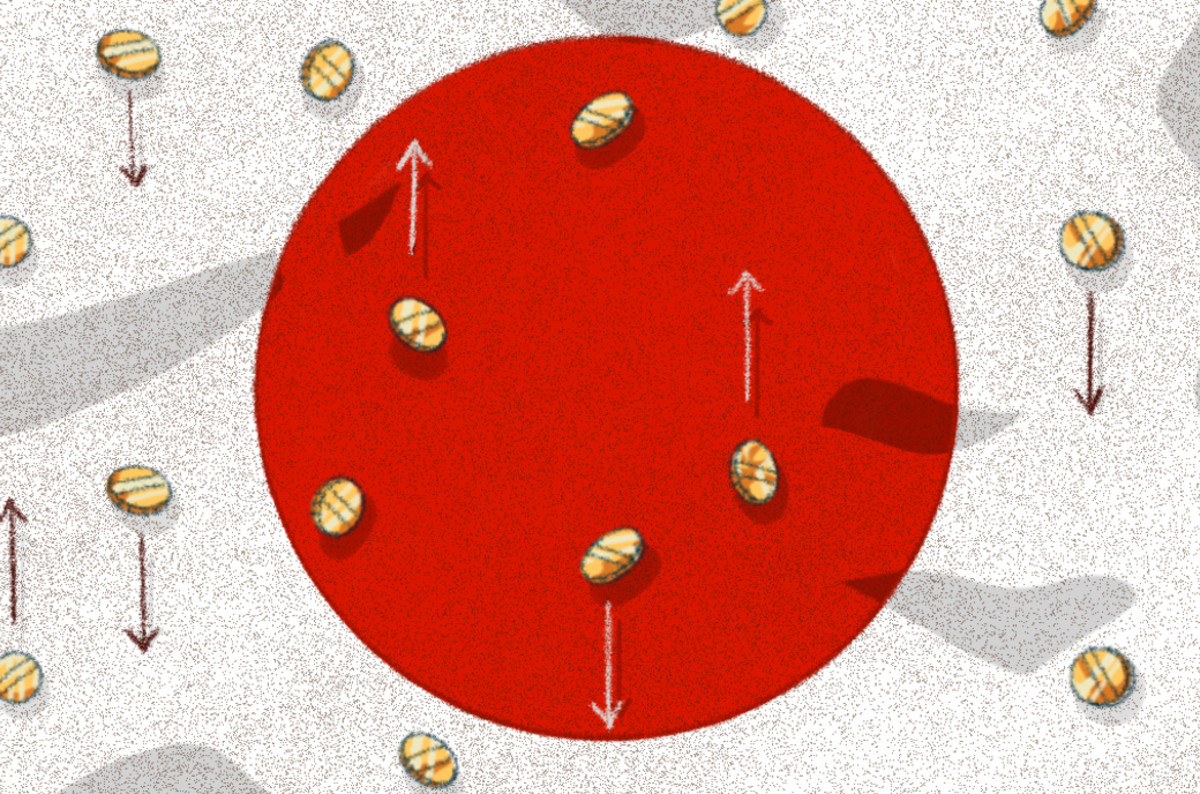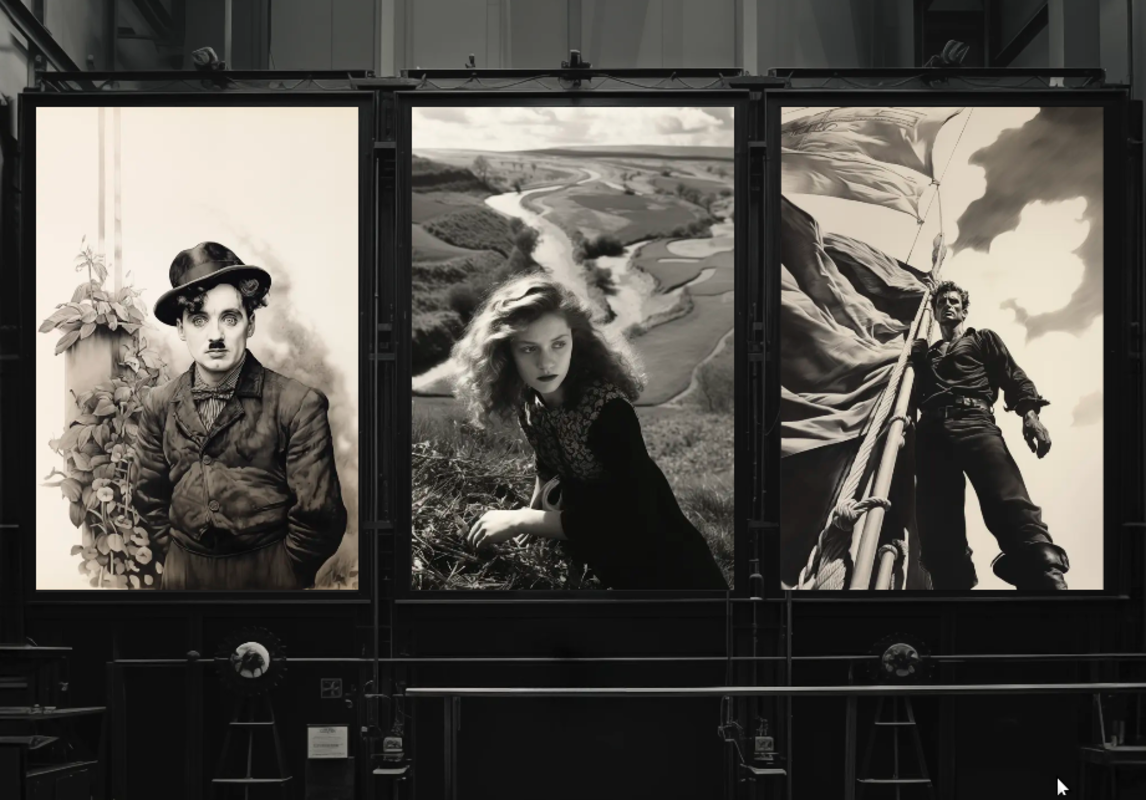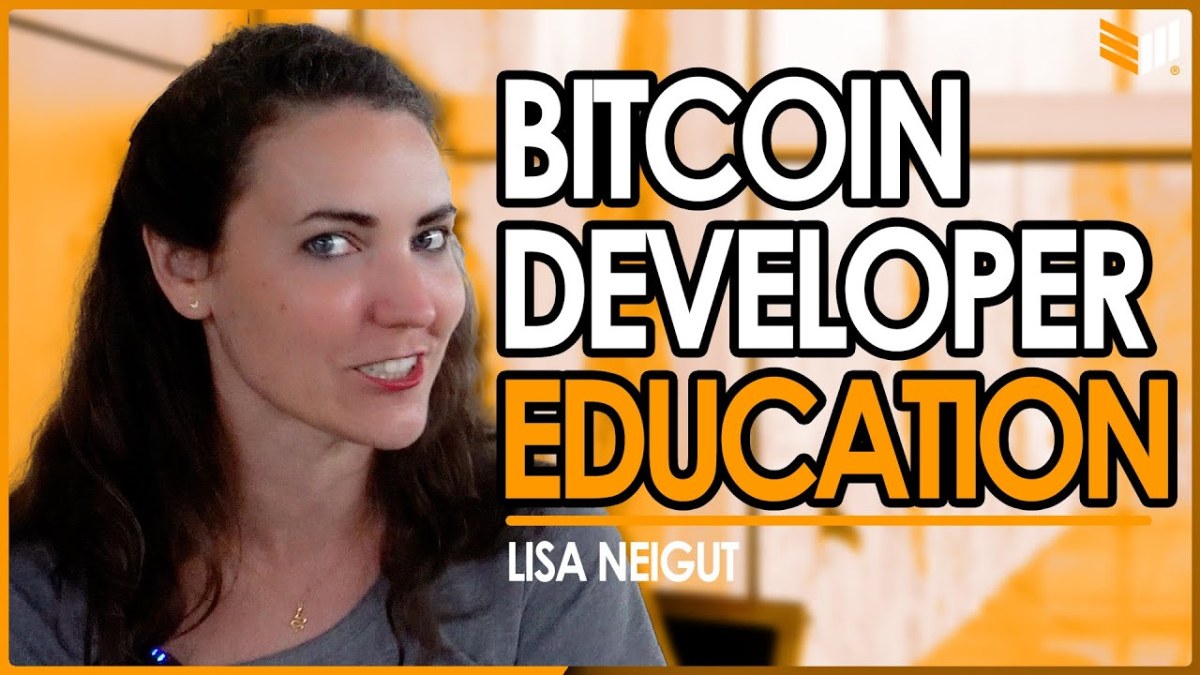Month: May 2024
Metaplanet to Buy Another ¥250 Million Worth of Bitcoin
Metaplanet Inc. (TSE Standard: 3350), a Japanese publicly traded company, has announced a significant enhancement to its Bitcoin holdings. In a recent board of directors meeting, the company resolved to purchase an additional ¥250 million, currently worth $1.6 million USD, worth of Bitcoin.
JUST IN: 🇯🇵 Japanese public company Metaplanet to buy another ¥250 million worth of #Bitcoin pic.twitter.com/YmRDiLl02z
— Bitcoin Magazine (@BitcoinMagazine) May 28, 2024
Metaplanet has recently outlined its approach to managing their Bitcoin. The company also stated that Bitcoins acquired for long-term purposes will be recorded at cost, ensuring stable accounting treatment over time. Conversely, Bitcoins held for short-term purposes will be revalued quarterly at market value. Any unrealized gains or losses from these short-term holdings will be recorded in the non-operating income section of the income statement, providing transparency and aligning with market fluctuations.
This strategic purchase follows a series of similar moves by companies globally, underscoring the growing acceptance of Bitcoin as a strategic and valuable asset class. Metaplanet also acquired an additional 19.87 BTC earlier this month for a purchase price of 200 million yen.
For further information on Metaplanet, additional details can be found on its website here.
Healthcare Company Semler Scientific Buys $40 Million Bitcoin, Adopts As Treasury Reserve Asset
Semler Scientific, Inc. (Nasdaq: SMLR), known for its healthcare solutions to combat chronic diseases, has announced a significant shift in its treasury strategy. The company’s board of directors has adopted Bitcoin as its primary treasury reserve asset, alongside a substantial purchase of 581 Bitcoins for an aggregate amount of $40 million, inclusive of fees and expenses.
JUST IN: Healthcare product manufacturer Semler Scientific purchases 581 #Bitcoin for $40 million 👀 pic.twitter.com/zYsVgN19gL
— Bitcoin Magazine (@BitcoinMagazine) May 28, 2024
“Our bitcoin treasury strategy and purchase of bitcoin underscore our belief that bitcoin is a reliable store of value and a compelling investment,” stated Semler Scientific Chairman Eric Semler. “Bitcoin is now a major asset class with more than $1 trillion of market value. We believe it has unique characteristics as a scarce and finite asset that can serve as a reasonable inflation hedge and safe haven amid global instability. We also believe its digital, architectural resilience makes it preferable to gold, which has a market value of approximately 10 times that of bitcoin. Given the gap in value between gold and bitcoin, we believe that bitcoin has the potential to generate outsize returns as it gains increasing acceptance as digital gold.”
Despite this strategic financial move, Semler Scientific said it remains committed to its core mission in healthcare of delivering innovative technologies as solutions to transform the healthcare management of chronic diseases and offer providers the opportunity to reduce costs and improve long-term patient outcomes. The company will also continue to focus on its flagship product, QuantaFlo®, a point-of-care test for peripheral arterial disease, while seeking expanded FDA clearance for other cardiovascular conditions.
“Furthermore, we are energized by the growing global acceptance and ‘institutionalization’ of bitcoin — reflected most recently by the Securities and Exchange Commission’s January 2024 approval of 11 bitcoin exchange-traded funds,” Mr. Semler continued. “These funds have reported more than $13 billion of net inflows, with investments from nearly 1,000 institutions, including global banks, pensions, endowments and registered investment advisors. It is estimated that more than 10% of all bitcoins are now held by institutions.”
Semler Scientific’s board and senior management shared that they have carefully considered various uses of excess cash and concluded that holding Bitcoin is the best strategy. For more information on Semler Scientific, visit their website here.
VINCENT D’ONOFRIO & LAURENCE FULLER DISCUSS “NO FEAR, NO GREED, NO ENVY” AND INSCRIBING ART ON BITCOIN
In this interview, renowned actors and artists Vincent D’Onofrio and Laurence Fuller give an insight into the creative process behind their artwork ‘No Fear, No Greed, No Envy’. It is the latest work of the collaborative initiative Graphite Method and represents a fusion of film history, digital art and poetic expression immortalized as a Bitcoin Inscription. What is special about the artwork is that the frame of the triptych and the word poem change daily at 19:19 UTC.
https://ordinals.com/inscription/97180c1a34fd5dbbdf3afcc5fc3708af63d0bb486fe224bdb7f0e2d4bb51efd7i0
STEVEN REISS: ‘No Fear, No Greed, No Envy’ is your fascinating new project. Can you share with us the inspiration behind this particular work and what brought you together to create Graphite Method?
LAURENCE FULLER: This piece came about when I spoke to Vincent about creating an artwork for Graphite Method to inscribe as an Ordinal. That it should be a historic concept relating to cinema, art and poetry and a first of its kind ~ that would forever be a statement on Bitcoin blockchain about the evolving technologies of our time and how it is affecting human expression.
At the time I was thinking a lot about the triptych throughout art history since the Renaissance and how that format of three act storytelling was explored by Francis Bacon in Modern Art, but was overlooked in more contemporary art, especially digital art in web3. What does the triptych mean to us today? And when it corresponds to the three act structure in cinema.
I discussed the limitations of the file size with Vincent, that it needed to be smaller to fit the parameters of Bitcoin ~ and about how our collaborator on this project Ordinally had spoken about the potential to create a piece that changes over time.
Immediately Vincent responded with the idea that the triptych should reference the story of Charlie Chaplin, Marie Pickford and Douglas Fairbanks and their signing of the documents for one of Hollywood’s most historic major studios, (we left out D.W. Griffith with good reason). The triptych would be three portraits that evolve over time to tell a dreamlike reimagining of this story from cinema history, but with some decisive differences that comment on the advent of AI. Each frame would incorporate a one word poem which would pass from bottom of the screen to the top and be narrated by Vincent and myself.
We came together to form Graphite Method after Vincent discovered my poetry pieces on Twitter, it was some time after I’d interacted with him about his acting some years before. The first piece he posted about was a collaboration with my mother Stephanie Fuller, an animated painting with poetry about whales. We went our separate ways and for a couple years I was carving out my niche in web3 defining the medium of cinematic poetry and collaborating with a hundred different artists around the world. But a year or so later I posted about our interaction again and we started a rapport, I asked Vincent if he wanted to collaborate and the next day he responded “what do you mean by collaborate?” ~ it all rolled on from there.
VINCENT D’ONOFRIO: in a conversation Laurence brought up the idea of a tryptic piece. We talked a bit about the history of tryptic pieces and how they furthered the scope of a piece or a series of pieces. An opportunity to take the structure of a piece, a portrait or an epic landscape and further its storytelling.
A good example are the triptychs first made in the Middle Ages, adorning the altarpieces of churches.The idea of multiple panels that could be open or closed. Shutting out a portion of the overall piece and then opening it up to further or look back at the story with a different perspective.
Within minutes as we spoke the No fear… piece came to me as a complete thought, a complete work, the whole piece, the whole story, the movement of the piece and its subject and characters. I immediately started to describe it to Laurence as I was being very specific with Laurence about the characters and their history. Laurence has a wonderful imagination. He of course understood the concept of the piece immediately. Within a day I jotted down the storyline. A sort of first draft. One word for each frame and I described how the words should move through the piece from bottom to the top. The tone, the feel the piece should have.
Laurence quickly started sending me rough drafts of visuals (WIPS) and we would discuss them and make notes. Laurence went in deep with visuals and just began to nail them in the most wonderful way. The overall concept was achieved. Other than that I’m not too keen about explaining our pieces. I do think that our pieces should speak for themselves to each individual spectator, onlooker, audience member. This piece I believe easily does speak for itself.
As far as the forming of Graphite Method. I noticed a piece that Laurence had posted on X. Having never met Laurence I reached out to congratulate him on his talent. One thing led to another and here we are with Graphite Method.
SR: You’ve described yourselves as pioneers of cinematic poetry. How does this medium influence your work with digital art?
LF: Well it is our chosen medium, I don’t know if I’d describe myself that way. Performing poetry and adapting it in this way, has brought my acting journals to life. A lot of the process of Method Acting gets lost to in the dusty libraries of time, and it’s never really explored in depth. Mostly because our output of emotional journaling character background, searching through thoughts and memories isn’t really shaped in the drafts of journaling. Those journals are often scrapped and what the audience sees is the finished performance. But what if they became the substance for works of fine art? It was really the rapid evolution of digital art techniques and processes in recent years that allowed me to refine these discoveries.
When I minted my first work of cinematic poetry on Ethereum Blockchain in March 2021 it was called “Childish Force of Nature”, my spoken word performance of a poem I wrote paired with an animated painting by Sima Jo, a celebration of the human experience of the ocean. The natural forces of this world must inform the substantial qualities of my art regardless of whatever latest update in AI takes place. That is a universal truth for me. As is writing the poetry by hand and performing it with my own voice.
As does Vincent too, when I collaborate with him on Graphite Method works.
VD: Personally I’ve never described myself as a pioneer of anything. To me all arts are variations on variations on variations throughout history. Times change, technology evolves and new variations are created from the breath and heart beat of artists before and artists now. That in itself is important enough. It just really is a very cool notion.
Other than being very excited about and appreciating other types of art and artists in this community I am truly wrapped up in creating what we are making at graphite method. Pushing this filmic poetry as far as we can and using the technology and our breath and heart beat to form them. We light it, shoot it, compose it, art direct it and write & direct it.
We are definitely on to something that excites us both. To me that excitement is what it’s about.
SR: Laurence, you once mentioned that technology is rapidly changing every aspect of our lives, and that artists are actually the first to feel and express these changes. How did this perspective influence your decision to use Bitcoin Ordinals for this project?
LF: Technology for me is an instrument, like a cello it plays the chords of Mozart. It’s there, it’s inanimate, but when human fingers and ideas pick it up, it takes on a spiritual quality. Or the actor’s voice in classical training especially is often referred to as an instrument. Much of my art is about honoring our past, the human past, art history, poetic history and cinema history. Though Bitcoin has that provenance of being the first blockchain and ultimately the last room in the library of digital knowledge kept safe behind vaults of code. It’s where the Divine Comedy, the Complete Works Of Shakespeare of the digital age are kept and stored. And if it’s not there yet, it will be. This piece is a declaration for that to be the case. Pioneers of cinema speaking through us, with conceptual poetry and art. I believe humans transcend technology in our capacity to feel and think and process the world around us.
I’ve been surprised at how well Vincent has taken to new technologies and its direction, at the age of 64, I would actually say he’s even more passionate and vocal about it than I am. He loves to say that I’m like a painter, but really I’m nothing like a painter, because I don’t paint. I approach this art the same way I approach a script as a performer. The visuals, symbols and poetry inform the end result as much as they have done in preparation for my performances as an actor in film and theater. And the immersive performances of the artworks, with the cinematic art flickering all around as I read the poetry from memory is where for me this medium finds its loudest heart beat. For me that’s the rawest and truest evocation of the spiritual aesthetics of the craft of acting, come to life in a completely new and visceral way, that cannot be replicated.
SR: You have both had remarkable careers as actors for several decades. How does your acting experience inform your work with Graphite Method?
VD: for years now I have learned to always move forward in how to express myself. To never look back and to confidently move forward. Putting whatever you create in front of an audience is always a crap shoot. Two things: failure or success. Both outcomes are good for an artist and both are not so black and white in how they affect you moving forward. They are sometimes interchangeable.
LF: It’s essential in the same way that dreams inform your day. This kind of work is like the subconscious foundations of something much larger in scale, yet it’s none-the-less essential.
I had been working in this way for a couple years before partnering up with Vincent and was largely informed by the dramaturgists, philosophers, writers and directors I worked with before I met him. After two years working together I feel like I’m only starting to get to know him.
My acting journals are really where it all started, about ten years ago when I worked on a film called “Road To The Well” which was very intense character, a philosophy dropout. The director asked me to study Camus and the existentialists to prepare for the role and I found it really helpful to incorporate some of those ideas in my approach to a script too. To prepare for a role or a script, I would write very raw prose poetry and pair it with visual references from art history, over the years that evolved and evolved until it came to the medium we’re dealing with today.
I was thrilled when Vincent, one of my heroes in the medium of acting asked to partner with me, I think it gave a very different quality to what I was developing. Vincent’s takes are more modern and avant-garde, usually completely disconnected from history. He’ll smash something to pieces one day and then the next declare it as precious and unbreakable.
For me the construction of a poem or a work of art is made up of adaptations, many little adaptations stacked upon one another until you get a Tower of Babel ~ a metaphor is an adaptation of a stark reality. A poem is an adaptation of something unbearably truthful. Language itself is adapted through generations, pictorial language and verbal. Our relationship to anything is an adapted relationship.
SR: Your project draws parallels to the early days of cinema, such as the foundation of United Artists. How do these historical references inform your work?
LF: I’m constantly fascinated by the marks made in the collective history of philosophy, cinema and in art. I think nothing can be as informative as life itself, but sometimes storytellers can hit upon truths that we are unable to explore without their aid. At times I find more truth in reading Baudelaire or my late father’s writing than the words of the people around me at the time. Sometimes the people around me are deeply informative to my art even if I feel isolated by them.
The London School painters were informed by the generation that preceded them with David Bomberg and Stanley Spencer and the like. Literature evolved that way too, when at one time a certain prose felt very of the moment later became passé and then to generation after that suddenly has a resurgence. And actors too are informed by previous generations, Daniel Day-Lewis said he was very informed by Brando. I think much in the same way I’ve been informed by Vincent. Not in any literal way, just in terms of when somebody pushes the boundaries all the way forward you cannot ignore it, as an artist you have to deal with that moment which changed everything.
Art history is essential in our works, though like the films of Chaplin created before 1929 it’s equally essential that these references are public domain.
VD: The idea that as an artist you are participating in the history of many artists throughout time. This is quite helpful. That you are not alone. That the idea of achieving 100 % in one’s art is a myth. It is instead a journey. It is your struggle to achieve 100 % knowing you never can.
That struggle is what the audience gets. That is the show, the story, the piece.
The struggle is constant. The reward is simply the fact that an audience might show up and have a look.
SR: Your artwork also questions the changing values and ethics surrounding the advent of AI. How do you see the parallels between the ethical questions raised by early cinema and those raised by modern digital technologies?
LF: The advent of the camera changed everything. Philosophers seemed to come closest to the truth when discussing how these changes affected painters and sculptors and how that had broader implications for society at large. In Walter Benjamin’s “The Work Of Art In The Age of Mechanical Reproduction” later on in John Berger’s “Ways Of Seeing” and in his troublesome protégé Peter Fuller’s “Seeing Through Berger”. All wrestled with the complexities of the material qualities of painting and sculpture relating to aesthetic experience and how that shaped our understanding of art as a spiritual experience. Whereas, the camera liberates the image from its physical presence and turns into something substantially new and different. The camera allows for ghosts of a moment and an object to exist in homes and minds around the world at the same time. Cinema reshaped these ghosts again to move and ultimately to speak.
Which in the time of Chaplin, Pickford and Fairbanks represented the changing of the guard in their chosen artistic medium. Sound and color.
Though Vincent seems to me to be deeply concerned about ethics and morality. It seems for him to be a stance he takes, though that stance seems to change quite often.
I would say that morality is less of a concern for me, in that I see life from an existential and stoic lens ~ it can all be gone tomorrow, so what did you really concern yourself with in the short time you were given? Whether you were a nice person in someone else’s eyes? Or whether you realized your dreams?
VD: People will lose jobs from AI. Me included. This does not make me jump for joy. Advancements in our cultures and in our technology have always done so. Yet I believe that legitimate art always rings the loudest no matter what the process is that created it.
I think that if there is a heart beat and human breath behind a creation we will survive these new technologies. What Laurence and I are doing has our heart beat and our breath behind every piece of ours. We photograph it. We art direct all of it. We write every word of it.
They are for sure our creations. We do not use AI as a mocking bird, so to speak.
SR: Can you explain how you used the file size limitations of Bitcoin to your advantage in creating this artwork?
VD: It spawned my idea of a sequence of stills with only one word for each frame. The only movement in the piece is the word floating up and through the frame.
LF: That was a big part of what made this piece what it is. Discussing the limitations of the file size was what lead Vincent to the idea that we should focus on the early days of cinema and how the limitations of their time defined the mediums of silent movies and black and white films. Watching Chaplin at his best is to see his inventions in the face of constraint. Technological restraints, optical restraints and on some cases morality’s restraints. He was overcoming the shackles of his day in very mischievous ways, which is why the world fell in love with him.
SR: What do you hope viewers will take away from experiencing this work, both artistically and technologically?
VD: I hope they dig it.
LF: I hope that with time and repeated exposure in museums and galleries around the world that this piece will come to represent the changing of the guard in all that we’re dealing with. The old world meeting the new.
Traditional mediums have always been important to me throughout my artistic journey, studying classical theater at Bristol Old Vic Theatre School, studying my late father’s art criticism, poetry and the philosophers he respected. And bringing those art forms to cinema and the independent films I acted in, wrote and produced has been very important to me and what I stood for as an actor and writer, now it’s also important to me for what I stand for in digital art.
SR: After your experience with bitcoin, what do you think are the biggest lessons you can take away and what advice would you give to other artists, but also collectors, who want to explore ordinal-based art?
VD: To think about the history and evolution of art. All the arts. Which can have endless possibilities. And it works well depicted in web3 sensibilities. A deep well to reach into.
LF: Connoisseurship in the arts has enriched my life in ways I could never have imagined, since I was a boy. I collected art and traded it, it was how I afforded my move to Los Angeles, was by making some decisive art deals from my private collection.
That passion for fine art, collecting, and curiosity in its cultural context was not always something that was understood by my peers at school and there’s a picture of me somewhere standing in front of five Lucian Freud etchings at the age of 18. When I was 19 I made a film about it, a film called Possession(s) which I wrote, produced and acted in ~ it was about this collector who gave up everything in his life to own a painting by the Australian artist Peter Booth, it completely consumed him, he became obsessed by it. I owned the painting in the film which was sort of this other character which loomed over the cast like a specter and when the film came out I sold it at auction.
You can never really know where owning a historic artwork will take you, nor how things will unfold. There’s magic in that.
The art can be view here: No Fear, No Greed, No Envy.
This is a guest post by Steven Reiss. Opinions expressed are entirely their own and do not necessarily reflect those of BTC Inc or Bitcoin Magazine.
Building the Future of Bitcoin Education
Bitcoin Magazine recently sat down with Lisa, founder of Bitcoin++ and the Base58 Bitcoin Developer course, to discuss her work and vision for structured education in the Bitcoin space.
Lisa’s journey in the Bitcoin space has been multifaceted. Currently working part-time with Blockstream on core Lightning projects, she also operates Base58, a platform designed to provide mid to senior-level developers with in-depth knowledge of Bitcoin technical development. This initiative stems from her belief that structured education can significantly enhance the Bitcoin development community’s capabilities.
“Structured education is hard, like good curriculum,” Lisa stated. “The pathways someone shows you to your information landscape really matters, I think, in terms of your success.”
The Bitcoin LARP Game: Making Learning Fun
One of the standout initiatives under Lisa’s leadership is the Bitcoin LARP game. This innovative educational tool is designed to make learning about Bitcoin’s technical aspects accessible and enjoyable for people of all ages and backgrounds. The game breaks down complex concepts into engaging, hands-on activities, allowing participants to gain confidence and a deeper understanding of Bitcoin.
Lisa shared her experiences of facilitating the first-ever Bitcoin LARP in Mexico, highlighting how it brought together individuals from various regions and countries. The success of this initiative underscores the potential of interactive and immersive learning experiences in demystifying Bitcoin’s complexities.
“The Bitcoin LARP game is a great teaching tool for experienced engineers,” she explains. “It’s super fun to see people’s faces kind of start lighting up as all the parts start building like a model in their heads and they realize, ‘Wait, I got this. This is something I can do.'”
Understanding the Mempool
Lisa’s vision for Base58 includes expanding the curriculum to cover advanced topics such as Taproot, Lightning Network, and covenants. One critical component of Bitcoin’s transaction processing that Lisa highlights is the mempool. Her research and insights into mempool mechanics reveal the nuanced and often surprising ways it operates, which is vital for developers aiming to optimize transaction efficiency.
“The mempool works in surprising ways,” Lisa remarked. “There are many non-obvious aspects that can greatly impact how transactions are processed and prioritized.”
Lisa explained that understanding the mempool is crucial for developers who want to optimize transaction efficiency and fee management.
The Importance of Good Curriculum
Throughout the interview, Lisa reiterated the challenge and necessity of developing a good curriculum. A well-structured educational pathway not only equips learners with essential knowledge but also builds their confidence in navigating Bitcoin’s technical landscape. Base58 aims to be a platform where anyone can run Bitcoin-related classes, fostering a community of knowledgeable and skilled developers.
“It is interesting how much good instruction is hard. Good curriculum really matters,” Lisa emphasized. “Figuring out the landscape and charting a path for others is essential for successful learning.”
Future Plans for Base58
Looking ahead, Lisa plans to solidify Base58’s presence as a premier Bitcoin education platform. This includes launching new classes, securing non-profit status to offer scholarships, and enhancing the online learning experience. The goal is to create a robust structure where both seasoned developers and newcomers can find valuable resources to advance their understanding and contributions to the Bitcoin ecosystem.
“Ideally, I want Base58 to be a place where if you have a class, you can run it here without worrying about finding students,” Lisa
explained. “Helping people get their classes put together, whether in person or online, is a key goal.”
Lisa’s work at Bitcoin++ and Base58 is paving the way for a more educated and capable Bitcoin development community. By emphasizing structured education and innovative learning tools like the Bitcoin LARP game, she is helping to ensure that the next generation of Bitcoin developers is well-equipped to build on and advance the protocol.
Bitcoin ETPs Begin Trading on the London Stock Exchange
The first bitcoin exchange-traded products (ETPs) have debuted trading on the London Stock Exchange after receiving approval from the UK’s Financial Conduct Authority. Asset managers WisdomTree and 21Shares both listed bitcoin ETPs on the LSE today.
NEW: 🇬🇧#Bitcoin ETPs will start trading on the London Stock Exchange today.
Are you prepared? 👀 pic.twitter.com/llurxr1NjC
— Bitcoin Magazine (@BitcoinMagazine) May 28, 2024
Last week, the FCA gave the green light for Bitcoin ETNs to be listed on the exchange. This enabled today’s launch from issuers who had been awaiting regulatory clearance to bring Bitcoin ETNs to the LSE.
21Shares listed two Bitcoin products: the 21Shares Bitcoin ETN (ABTC) and 21Shares Bitcoin Core ETN (CBTC). Meanwhile, WisdomTree launched its Physical Bitcoin ETN (BTCW).
All the ETNs provide exposure to the price of bitcoin. They are currently only accessible to professional investors under FCA rules. “But the game-changer in the UK will be when the retail ban is lifted; there is a retail ban on trading bitcoin and ether ETNs at the moment”, Alex Pollak, head of UK for 21Shares, mentioned.
Click the image to learn more.
Today’s debut is a milestone for both Bitcoin adoption and London’s aspirations to be a digital asset hub. Other major financial centers like the US, Europe and Hong Kong already offer regulated bitcoin funds, pressing the FCA to catch up.
21Shares co-founder Ophelia Snyder emphasised, “The UK is one of the deepest, most liquid capital markets in the world.”
The FCA is taking a phased approach to opening its market. Listing bitcoin ETNs enables professional investors to gain regulated exposure to crypto assets on the LSE for the first time.
BofA sees dollar weakness amid negative US data, China optimism
Post Content
BofA sees trend followers likely to sell USD this week
Post Content
‘We believe 160 is toppish for USD/JPY’: UBS
Post Content
UBS sees potential for Swedish krona volatility amid rate cuts
Post Content
Dollar slips lower ahead of core PCE release; euro gains
Post Content







